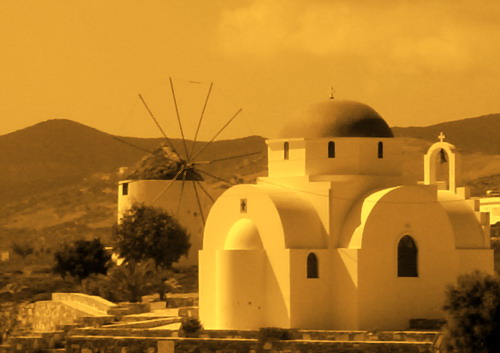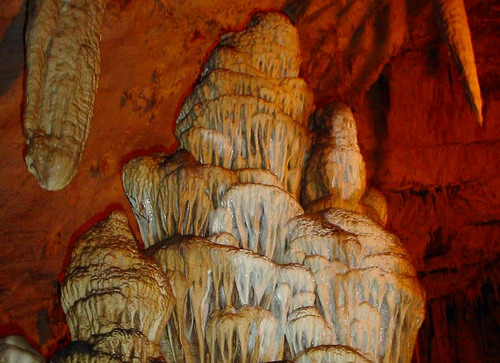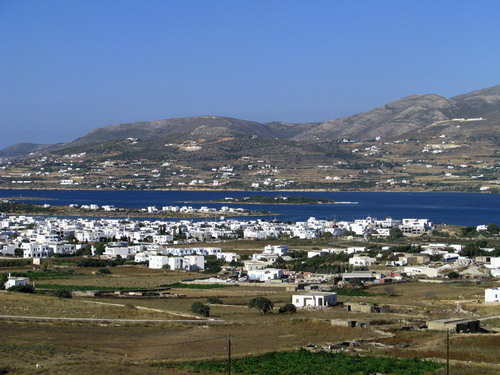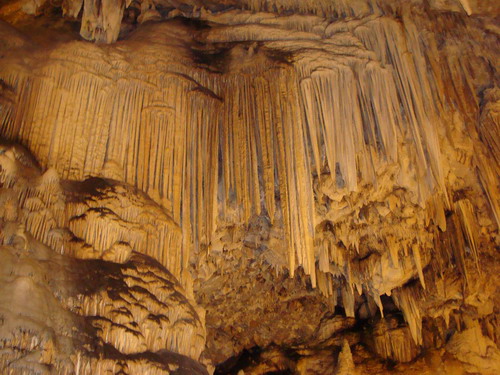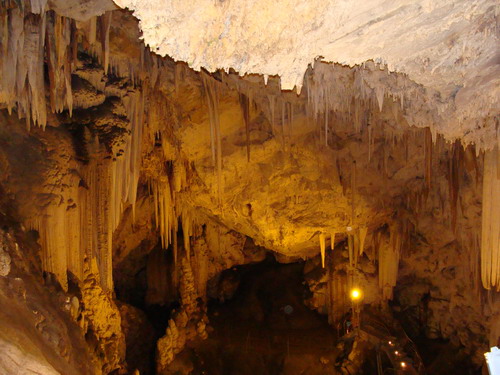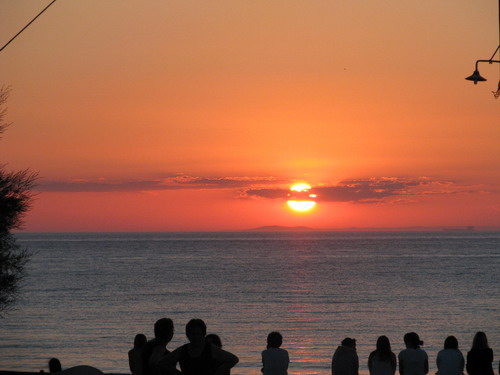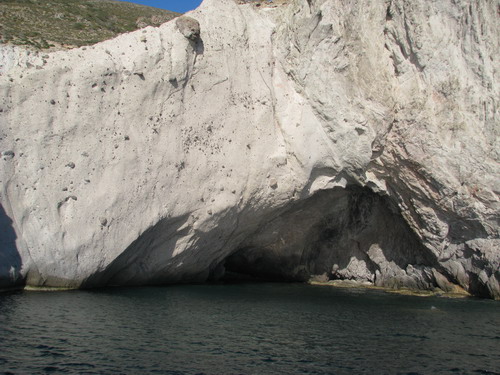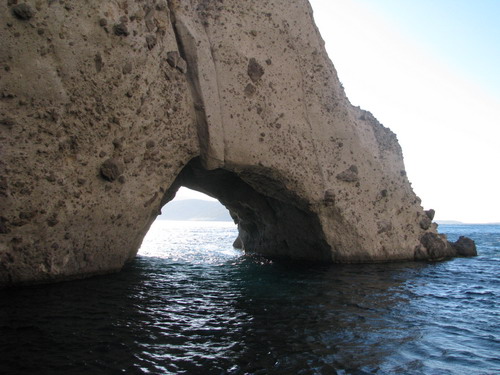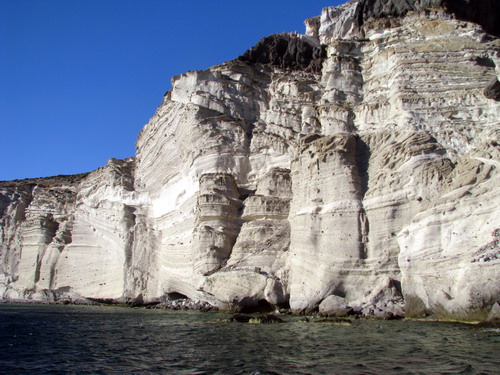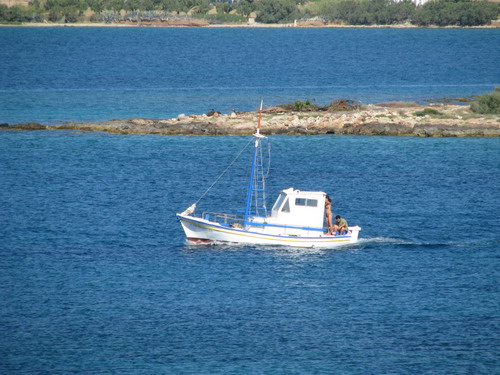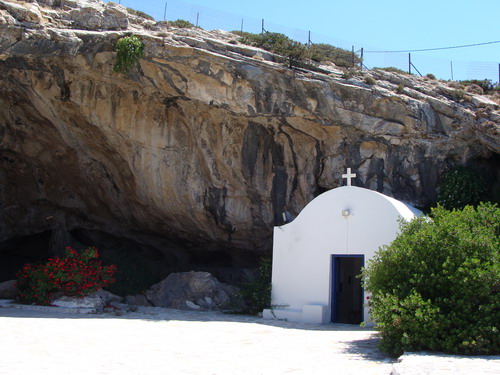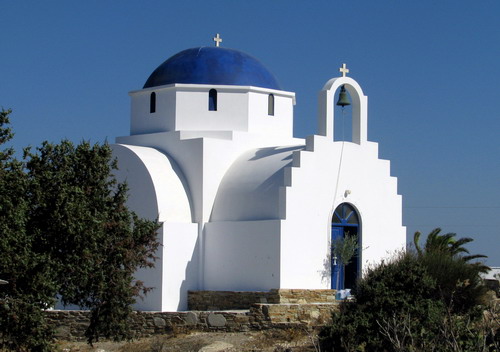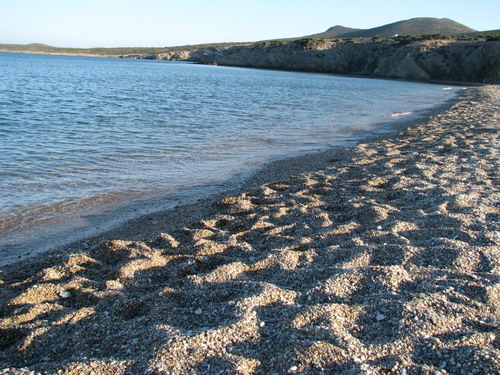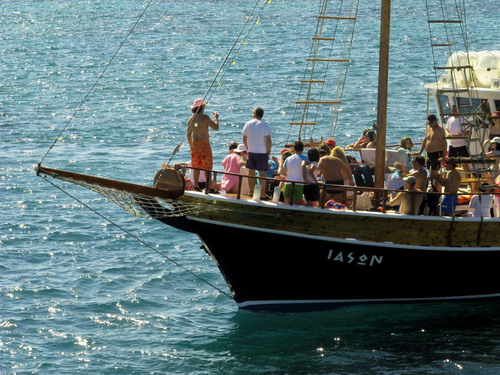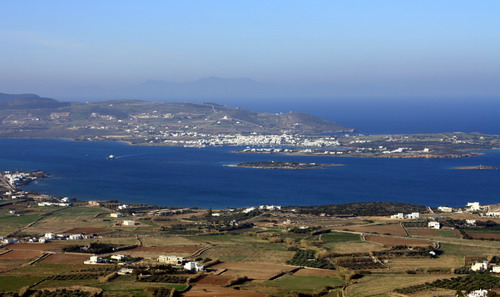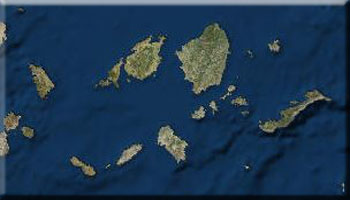Antiparos is like a white canvass with dashes of blue and green against the shimmering blue Aegean. The island has historic importance and is known around the world. Monuments and other landmarks attest to the creators of the unique Cycladic civilization. One of the world's most gorgeous caves gapes in the middle of the island, which became known around the world between the 17th and 19th centuries thanks to the texts of foreign travelers describing the cave, its paintings, and other archaeological sites on the island. Today, Antiparos attracts thousands of tourists who come to admire the cave, swim in the pristine waters, stroll the quaint cobbled passages through the town, and sample local foods and the island's fine wine and tsikoudia. Bars and discos offer nightlife, but more importantly the locals' hospitality and warmth guarantee a memorable stay.
Antiparos is reached via Paros, which is linked to Athens by plane and regular boat service (ferry, high speed, and hydrofoil) from Piraeus, Rafina, Thessaloniki, Crete, the Sporades, the Dodecanese, and the eastern Aegean island. Access from Paros is easy: just a 30-minute crossing by fishing boat from Paroikia and a 6-minute crossing by ferry from Pounta.
In historic times, the island's first settlers were Phoenicians from Sidon, who were succeeded by a number of settlers. In antiquity, Antiparos was known as Oliaros and its history is inextricably linked to that of Paros. The earliest reference to Antiparos with its present name is in the 13th century, even though the name itself is ancient as in mythology Antiparos was one the 50 sons of the murdered Aegyptus; Antiparos and a brother were the only two boys who survived as the rest were murdered by Aegyptus's wife, Kritomythea, a daughter of Danaus.
In Byzantine times and through the early 13th century, as well as during the Greek independence revolt in 1821, the island suffered from raids by pirates from Algeria, Crete, Kefalonia, and elsewhere. In 1537, Antiparos and the rest of the Cyclades passed into Ottoman rule and the hands of the fierce pirate Barbarossa; during that period, the island was savagely pillaged. Antiparos was among the first islands in the Cyclades to join the Greek independence struggle. The island officially became a part of the Modern Greek State in 1832.
In the second world war, Antiparos was active in the resistance against the Germans, serving as a secret base for the Allied forces.
The Cave
The Antiparos Cave is unique, not just for its stalactite formations but for its close links to the island's history.
Ancient vessels found inside were dedicated to the goddess Artemis and, according to one epigraph, the lyric poet Archilochus of Paros was among its earliest visitors. The names of Macedonian generals conspiring against Alexander the Great were found inscribed in the cave, where they hid to escape Alexander. Another notable visitor was the Marquis de Nointel, the French ambassador to Constantinople, who spent Christmas Day 1673 in the cave. Many visitors, from the Marquis de Chambert in 1775 to King Othon (Otto), Greece's first king, in 1840 carved their name on the walls. During the second world war, the cave suffered extensive damage by the Nazi occupiers.
The cave can be reached by car or municipal bus. The church of Ai Yannis Spiliotis stands at its entrance.
Despotiko
The god Apollo was widely worshipped in the Cyclades, and the largest cult center dedicated to the god was on the island of Delos. There were also 22 smaller temples, and one of these was at Despotiko. The sanctuary is unique in the Aegean. Built on one of the tiniest uninhabited and unspoiled islets of the Aegean, Despotiko stands intact. The temple was used for worship from the seventh century B.C. through Roman times.The site of Despotiko has been identified as ancient Perpesinthos.
Excavations in the 19th century by the Greek archaeologist Christos Tsountas uncovered Proto - Cycladic cemeteries. In 1959, excavations under N. Zafiropoulos at Zoumbaria and Mandra on the island's northeastern coast found traces of a Doric temple. Since 1997, excavations under Yannos Kourayos have brought to light extensive remains of a temple's auxiliary areas. A unique find was a large idol of a female deity that has been dated to 680 - 660 B.C. Similarities in mobile finds and architectural parts at Despotiko and those found at the Delios sanctuary of Apollo and Artemis on Paros suggest the site was a temple dedicated to the cult worship of these two deities.
Kastro
Traces of a Venetian castle are visible among the traditional architecture of the main settlement on Antiparos. Built in 1440 to shelter inhabitants during frequent pirate raids, the Kastro, or fortified settlement was a square structure whose perimeter was formed by the outer walls of dwellings, with an interior courtyard and a circular tower in the center. The tower served as the residence of the local archon. Kastro's single entrance is next to the Ayios Nikolaos cathedral.
The Folklore Museum of Antiparos
In the old castle of Antiparos will find the Folklore Collection of Community Business Antiparos in which there are old objects, specimens from Cycladic figurines, traditional uniforms of Antiparos and photographs from the excavation of Despotiko.
Antiparos's coast forms a number of picturesque coves that attract thousands of tourists each year. Some are accessible by road, others by fishing boat and are worth exploring.
Pantieronisia, Despotiko islet with its archaeological site, Faneromeni and Ayios Spyridonas beaches, and the sea caves along the coast are peaceful and impressively beautiful.
Feast days of saints are observed each year with a paniyiri, a religious and folk festival that provides a link between local customs and the island's younger generations and, of course, visitors.
On May 7, the feast of Ai Yiannis Spiliotis is observed with a paniyiri, including folk dances and food, in front of the cave.
The feast of Ai Yiannis is observed on June 23 - 24 through a custom known as Kleidonas recreated in the port by the island's folk dance troupe.
In mid - July, a three - day paniyiri is held in the harbor to observe the feast of Ayia Marina, with folk dances, traditional songs, and food.
On September 7, there's a paniyiri at the church of Panayia Faneromeni, on the far side of the island where pilgrims are ferried by fishing boats.
| MUNICIPALITY OF ANTIPAROS | 2284061570 |
| CITIZENS SERVICE BUREAU (KEP) | 2284063137 |
| MEDICAL CENTRE | 2284061219 |
| HARBOR POLICE | 2284061485 |
| POLICE STATION | 2284061202 |
| BUS TO THE CAVE | 2284061231 |
| TAXI | 6976780944 |









